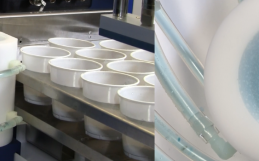The idea of ‘clean’ water has evolved over the years as we further our understanding of human impact on the environment, and the subsequent impact of a polluted environment on our health. The 20th century brought a wealth of technological advancements that improved our ability to mitigate our impact on environmental systems and protect the public from the health issues related to unsafe drinking water. Water and wastewater treatment have become critical aspects of our society’s ability to coexist with Earth’s natural systems. As industrial activity and population continue to grow in the 21st century, continuing improvement of water treatment technology is of vital importance.
There are a wide variety of chemical parameters, both organic and inorganic, that interact through complex reactions to perform water and wastewater treatment processes. A full treatment system is composed of a series of these processes, with the intention of eliminating all unwanted compounds from the influent stream. These systems are designed to provide stable and consistent removal of organic and inorganic matter, provided that the parameters that facilitate the reactions are maintained at proper levels. Therefore, operation of treatment plants requires extensive means of monitoring the essential water quality parameters throughout the plant.
One of the most critical challenges faced by water utilities is quantification of organic load on their treatment system. The removal of natural organic matter (NOM) is crucial for maintaining stability of treated water and the distribution system. Inadequate removal of NOM can lead to taste/odour issues, deterioration of pathogen log removal/inactivation capabilities, and formation of carcinogenic disinfection by-products (DBPs).
Wastewater treatment plants are highly dependent on biological processes to break down the wide variety of organics stemming from both sanitary sewage and industrial process effluents. Upon initial plant design, all aspects of the expected influent waste are taken into account, and ultimately determine the appropriate combination and configuration of treatment processes. After a treatment plant becomes operational, one of the greatest challenges faced is keeping up with constantly increasing wastewater loads in growing areas. Constant monitoring of BOD, COD, and TOC is essential for ensuring efficient and effective treatment.
Click here to view the full article.






